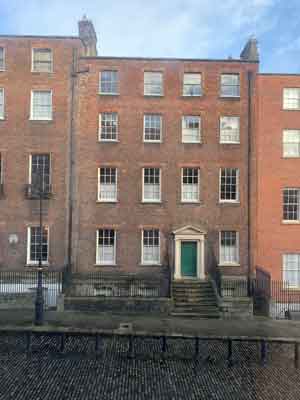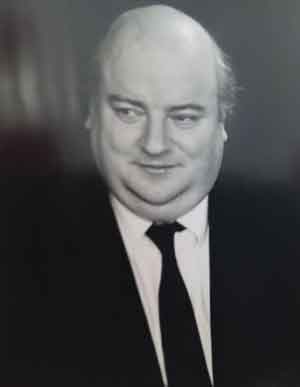THE ‘RED LIBRARY’ OF HENRIETTA STREET
Published in Issue 2 (March/April 2023), News, Volume 31By Fergus Whelan
I recently had the very great pleasure of visiting the annexe of Ballyfermot Library, which contains the 7,000-volume Sé Geraghty collection. It is a wonderful resource, consisting mainly of books, but there are also many pamphlets and periodicals, encompassing the arts, literature, politics and history. There is a particular emphasis on old Dublin. Indeed, Geraghty was a quintessential Dubliner who loved to read about and to walk the streets, improving his knowledge of the geography and history of his native city.
Sé Geraghty was born in Cornmarket on the south side of the River Liffey on 4 September 1940. He was a lifelong socialist and republican and for many years was a militant trade union official. He was an avid book-collector and built up his extensive library over several decades. In the 1970s he and his partner Alice Hanratty, the well-known artist, moved into 4 Henrietta Street, in a once-fashionable Georgian street which had later become tenement housing for poor families. He was to live there for the next 30 years.
Geraghty re-roofed the house and made it habitable and a home for this extensive library. He spent many hours in the Registry of Deeds (also in Henrietta Street) trawling through the early folios of the street. From his perspective, the early residents were a ‘parcel of rogues’—the Earls of Leitrim, Viscount Molesworth, the Earl of Shannon, Luke Gardener a.k.a. Lord Mountjoy and Archbishop Hugh Boulter. He began but, alas, never got to finish what would have been a devastating critique of what he saw as the most corrupt aristocratic clique ever to grace a Dublin street.

Above: 4 Henrietta Street, which Sé Geraghty re-roofed in the 1970s and which became home to his extensive library. (Oliver Deane)
Following Sé’s death in 2006 Alice donated the collection to the City of Dublin. She hoped that it would become an educational resource for those interested in the myriad of subjects encompassed within the collection. Dublin City Council library services have done an excellent job of cataloguing the collection. One can have hours of fun just consulting the on-line catalogue while marvelling at the depth and breadth of Geraghty’s interests.
Eclectic as Geraghty’s reading clearly was, there is no denying that in terms of history and politics this is a socialist and a republican library. This is not to be wondered at. Sé’s father, Tom, was an IRA veteran, and his mother, Lily, was a member of the Communist Party of Ireland in the 1930s. Both parents eventually joined the Labour Party. Sé’s four brothers—Seán, Tom, Des and Hughie—were also lifelong socialist activists and leading trade unionists. Other early influences on the young Geraghty were iconic figures on the left such as Peader O’Donnell and George Gilmore.
There are no fewer than 26 titles here dealing with the Russian Revolution alone. There are six biographies of Joseph Stalin and three of V.I. Lenin but just one life of Leon Trotsky. The collection also holds comprehensive selections relating to the Spanish Civil War and the Irish and international labour and trade union movements. Historians or students of history, whether their interests are ancient, medieval, early modern or modern, will find plenty of interesting material here. Many of the titles relate to Irish revolutionary movements and leaders, from Wolfe Tone’s United Irishmen through Kickham and the Fenians, Davitt and the Land League to Connolly, Pearse, Casement, the Easter Rising and Frank Ryan’s Republican Congress.
There are biographies and critical essays on all the great Irish writers and dramatists—Swift, Goldsmith, Synge, Joyce and Yeats. Even this literary section demonstrates Geraghty’s interest in matters left-wing. For it is the self-confessed Reds—O’Flaherty, O’Casey and Behan—who seem to predominate. There are thirteen titles alone dealing with Brendan Behan, not counting those devoted to other members of that illustrious family—Kathleen and Dominic Behan.
While there is no doubt regarding Geraghty’s keen interest in all things pertaining to the history of Dublin, local historians in every part of Ireland will find something to interest them if they visit Ballyfermot Library.
As befits such a valuable and unique collection, the books are not available for loan. Interested readers and students can gain access by appointment with Ballyfermot Library. To make the most of your visit, you would be well advised to consult the on-line catalogue to identify those titles most relevant to your area of interest.
Fergus Whelan is the author of May tyrants tremble: the life of William Drennan (Irish Academic Press, 2020).

















